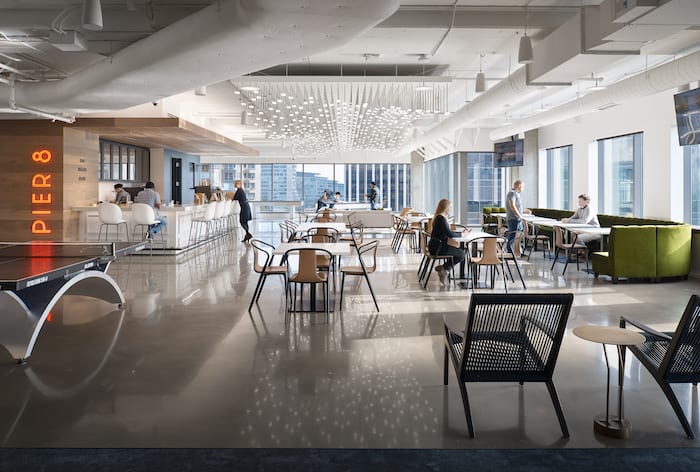It’s Time for a New Workplace Narrative: Moving Past Open Versus Closed Spaces

BUILDING DIALOGUE
Today’s organizations are challenged with creating work environments for employees that stretch over five generations, that attract and retain the best talent and, above all, provide a great experience at work. The debate around workplace environments continues to generate significant attention … and it’s no wonder everyone is seeking answers to the open versus closed debate. But, these conversations can be extremely polarizing and unproductive without an understanding of how your company works best and what strategies can be employed to develop a tailored solution.
“One of the most important decisions companies need to make is how open they should make their office,” says Gensler Co-Chief Executive Diane Hoskins. “For the first time, we have data to help inform this decision as well as other decisions about the type of workplace strategy offered by employers. This new data will help companies devise more effective real estate strategies that will improve employee productivity, deliver cost savings, and make an organization more attractive in recruiting top talent.”
Gensler’s 2019 U.S. Workplace Survey surveyed 6,000 office workers across 10 industries to provide new insight into not only what makes an effective workplace, but also the right way to invest in work-focused amenities, including coworking, that provide higher employee engagement, business performance and experience.
The workplace serves as a vital part of our daily lives. Since 2005, Gensler has closely studied the trends impacting workplaces around the world to better understand what drives employee effectiveness and, ultimately, what leads to great work environments. For employers looking to create a great workplace experience to entice and retain top talent, there are three things companies can implement to optimize employees’ performance in the workplace:
• Design open environments to include private space, too. Open environments with on-demand private space are the most effective and offer the best experience.
• Create amenities that are about optimizing work, not escaping it. High performers work everywhere – both inside and outside the workplace. Amenities are central to a successful workplace, but some offer significantly more value than others.
• Use coworking as a part of, not a replacement for, a great workplace experience. When large companies offer employees the option to use a coworking space, it is associated with a better work experience and higher performance, but it loses its luster if used more than one day a week.
An effective workplace is critical, but it’s not enough. Our research found that workplaces with “mostly open” environments combined with the right amenities and on-demand private space are the ones that deliver best. They tend to perform highest on both effectiveness and experience. These spaces differ from “totally open” environments by providing ample on-demand areas of enclosure that support privacy and individual work, even while most or all employees sit in “open” individual spaces. They provide impactful amenities, the five top-performing of which are innovation hubs, maker spaces, quiet/techfree zones, outdoor workspaces and focus rooms.
Team building and collaboration are the highest rank of a great workplace. When it comes to determining what constitutes the best workplaces, people actually ranked collaborative values ahead of individual values: “Team building and collaboration” are among the highest ranked aspects of a great workplace (43 percent) by our respondents.
In high-performing work environments, it doesn’t matter whether an office is open or closed. What matters is that the space is designed to function well, and that it aligns with employees’ needs and values. In other words, an open plan can be just as effective as a private one. It’s time to move past the open/closed debate and instead focus on what really matters – a well-designed space that supports team-building, collaboration and individual work.
Published in the June 2019 issue of Building Dialogue.















